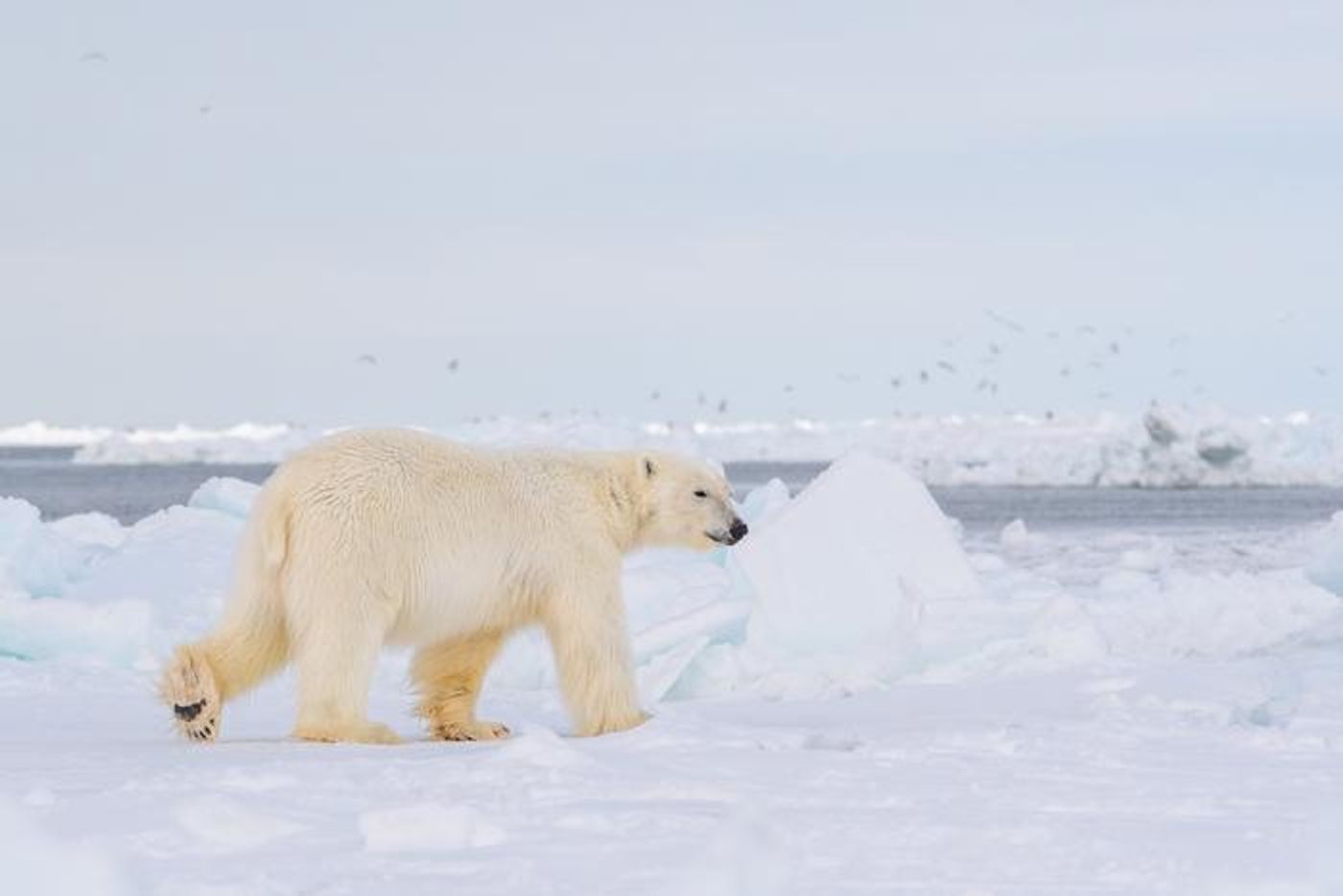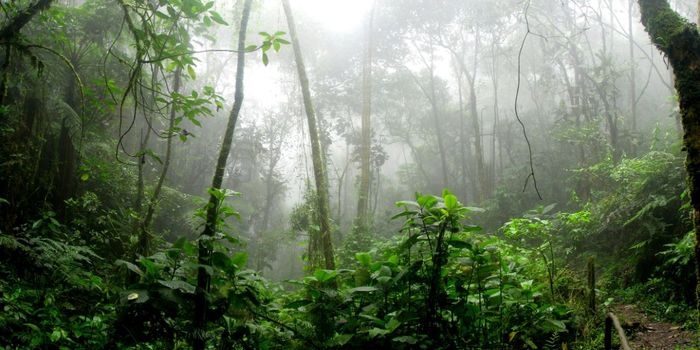Snowy Footprints as DNA Gold Mines: A New Frontier in Polar Bear Research
Can scientists use DNA from polar bear footprints to help improve conservation efforts during this age of climate change? This is what a recent study published in Frontiers in Conservation Science hopes to address as a team of international researchers have developed a novel tool designed to use DNA from polar bear footprint skin cells with the goal of tracking the large mammals without the need to capture them, which often risks the safety of both the polar bears and their human captors in the process. This study holds the potential to develop new methods in tracking animals whose populations are at risk as climate change continues to warm the planet.
Polar bear near Utqiagvik, Alaska in May 2022. (Credit: Elisabeth Kruger, World Wildlife Fund)
The World Wildlife Fund (WWF) currently estimates 22,000-31,000 polar bears worldwide, which are divided into 19 distinct sub-populations while classifying a “vulnerable” risk to polar bears on the international scale, along with having this same classification for Greenland, Denmark, and Norway. Additionally, they are polar bears are classified as “threatened” in the United States, “recovering” in Russia, and “special concern” in Canada, the last of which 60-80 percent of polar bears reside. As noted, capturing or trapping polar bears can be extremely dangerous, with previous methods using low-flying helicopters to dart polar bears.
“It is particularly challenging, expensive, and time-consuming to find polar bears in the Arctic, let alone count them and understand how they are coping with climate change,” said Dr. Melanie Lancaster, who is a Senior Specialist of the WWF Arctic Programme and a co-author on the study.
For the study, the researchers used common forensic methods that can be used on DNA samples and aspired to see if this same method can be used to track polar bears in the wild. The team collected snow samples from 24 wild polar bear tracks and 44 wild lynx tracks who resided both in the wild and captivity, along with tracks from a single snow leopard in captivity. In the end, the team found they could identify nuclear DNA from 87.5 percent of wild polar bear tracks and 59.1 percent of wild lynx tracks. Additionally, they found they could ascertain the sub-population—or genotype—for 13 of the wild polar bear samples and 11 percent of the lynx samples and the samples obtained by trained personnel yielded a 76 percent retrieval of nuclear DNA along with genotyping 24 percent of those samples, as well.
“We hope this method will be taken up by the polar bear research community, with the involvement of hunters, volunteers, and Indigenous communities, as a new way to collect information on polar bears,” said Dr. Lancaster. “We also hope the method will be expanded to other animals living in snowy environments — we have shown it works for lynx and snow leopards as a start.”
How will this new method aid in conservation efforts for polar bears and other mammals in the coming years and decades? Only time will tell, and this is why we science!
As always, keep doing science & keep looking up!
Sources: Frontiers in Conservation Science, World Wildlife Fund, Exploratorium, EurekAlert!









